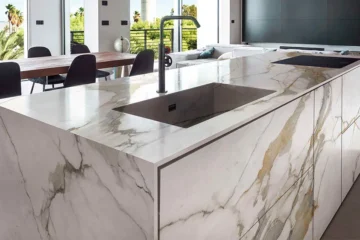Port St. Lucie, a city renowned for its serene waterways and lush landscapes, also presents unique challenges for homeowners. Among the most insidious threats is the termite, a relentless insect capable of causing substantial damage to property. Understanding the termite menace and implementing effective prevention and control strategies are crucial for safeguarding your home.
The Termite Threat in Port St. Lucie
Florida’s warm, humid climate provides optimal conditions for termites to thrive. Port St. Lucie, with its proximity to the coast and abundant vegetation, is particularly susceptible to infestations. Two primary types of termites pose significant risks to local homes:
- Subterranean termites: These termites reside in underground colonies and construct mud tubes to access wood sources. They pose the most common threat to homes in Port St. Lucie.
- Drywood termites: Unlike their subterranean counterparts, drywood termites establish colonies directly within wood, without requiring soil contact. While less prevalent, they can cause significant damage if left undetected.
Signs of a Termite Infestation
Early detection is key to mitigating termite damage. Always lookout for the following telltale signs:
- Mud tubes: These thin, winding tunnels are constructed by subterranean termites to travel between their colony and food sources. They are often found on exterior walls, foundations, and wooden structures.
- Swarmers: Winged termites emerge from established colonies to mate and create new nests. Their presence indoors is a clear indication of an infestation.
- Discarded wings: After swarming, termites shed their wings, which can be found near windows, doors, or on floors.
- Hollow-sounding wood: Tap on wooden structures. A hollow sound may suggest internal damage caused by termites.
- Wood damage: Visible signs of termite activity include tunnels, holes, and peeling paint on wooden surfaces.
Termite Prevention: Your First Line of Defense
Proactive measures can significantly reduce the risk of a termite infestation. Implement these prevention strategies:
- Moisture control: Termites thrive in damp environments. Regularly inspect your home for leaks, ensure proper ventilation in crawl spaces and attics, and address any moisture issues promptly.
- Wood-to-soil separation: Create a physical barrier between wood and soil by using treated wood or metal supports for decks, porches, and other structures.
- Regular inspections: Conduct thorough inspections of your home every three to six months, paying close attention to areas vulnerable to termite activity, such as basements, crawl spaces, and kitchen and bathroom areas.
- Proper landscaping: Maintain a dry perimeter around your home by removing wood debris, mulch, and other potential food sources.
- Professional termite inspections: Schedule annual inspections by a qualified pest control Port St Lucie professional to identify potential problems early on.
Advanced Termite Control Measures
If you suspect a termite infestation, professional intervention is essential. Here are effective control methods:
- Baiting systems: This environmentally friendly approach involves placing bait stations around your property to eliminate entire colonies.
- Liquid termiticides: These chemicals create a protective barrier around your home to deter termites.
- Foam termiticides: Similar to liquid termiticides, foam treatments provide targeted protection, especially in hard-to-reach areas.
- Heat treatments: In severe cases, heat treatments can be used to eliminate termites and their eggs.
Choosing the Right Pest Control Professional
Selecting a qualified pest control company is crucial for successful termite management. Consider the following factors:
- Experience and expertise: Look for a pest control company with a reliable track record in residential and commercial termite control.
- Licensure and insurance: Ensure the company is licensed and insured to operate in your area.
- Warranties and guarantees: Inquire about the company’s warranties and guarantees to protect your investment.
- Customer reviews: Look at online reviews to ascertain previous customers’ satisfaction.
- Cost estimates: Obtain detailed cost estimates from multiple providers before making a decision.
DIY vs. Professional Treatment
While some homeowners may be tempted to tackle termite control themselves, professional expertise is often necessary for effective and long-lasting results. Termites can be challenging to eradicate, and improper treatment may worsen the infestation. A qualified pest control professional has the knowledge and tools to identify the extent of the problem and implement appropriate solutions.
By combining preventative measures with professional pest control services, you can significantly reduce the risk of termite damage to your Port St. Lucie home. Remember, early detection and prompt action are key to protecting your property and investment.
Conclusion
Protecting your Port St. Lucie home from termites requires a multifaceted approach that combines prevention, early detection, and professional expertise. By understanding the termite threat, implementing effective prevention strategies, and enlisting the services of a qualified pest control Port St Lucie company, you can significantly reduce the risk of costly damage to your property.
Remember, termites are persistent pests that can cause extensive damage over time. Regular inspections, proper maintenance, and prompt action are essential for safeguarding your home. Don’t wait for the telltale signs of an infestation. Take proactive steps.
By investing in termite prevention and control, you are not only preserving the structural integrity of your home but also enhancing its overall value. A termite-free property is a testament to diligent homeownership and a sound investment in your future.
Keep an eye for more latest news & updates on Discover Tribune!




